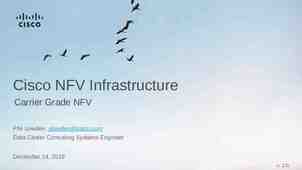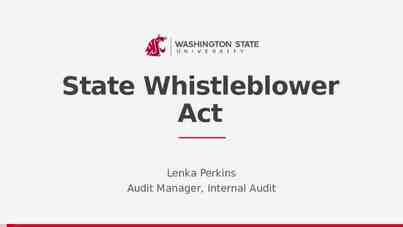A SOUND IP LEGAL FRAMEWORK FOR THE PROTECTION OF SOFTWARE Seow
31 Slides1.13 MB
A SOUND IP LEGAL FRAMEWORK FOR THE PROTECTION OF SOFTWARE Seow Hiong GOH Director, Software Policy (Asia) Business Software Alliance 29-30 May 2007
BSA Global Members
BSA Asia Regional Members
Software as Foundation Technology as key economic enabler ICT – software, hardware, services, telecommunications Software as foundation Key to innovation Rapid development Software innovation is a driving force for economic, social, and technological progress
INTELLECTUAL PROPERTY & INNOVATION
Sustaining Innovation Key Elements: Effective intellectual property (IP) protection Recognizing the value of IP Create virtuous cycle of research & development (R&D)
IP Protection Many forms Copyright, Trade Mark, Patent, Trade Secrets, etc. Licensing allows competing companies to work together Create new innovation and standards
Value of IP Questioned? Some argue against IP Oppressive regime by international companies and foreign countries? Abused to prevent use of fundamental concepts? Inhibits new ideas and innovation?
Information Economy Knowledge and information key assets, key driver Better IP protection leads to better creativity, competition, economic success
Software Piracy Asia Pacific: study shows 55% of software is pirated Worldwide average is 35% Costly to industry Damages not just international companies but also domestic companies Deprives countries of jobs and revenues Lacking respect for intangible property
Foreign Investment Good IP regime a key factor Companies who want to invest and compete need to know and work in environment where ideas and innovation are protected Benefits Scientific and technological progress Knowledge transfer
Local Investment Local companies also benefit Better position to negotiate with large companies Cross-licensing, buy-out Invest in new resources, R&D through licensing and royalties Benefits both large and small companies Lack of IP respect or protection lack of incentive to invest in R&D
Revenue International software products Benefits both local and international companies Local industry earns more than international companies from products Local industry involved in distribution channels, IT services market, support, maintenance, add-on, etc.
Reducing Piracy Significant benefits in reducing piracy rate Studies show benefit of 10 point reduction Asia – reduction of 10 points over 4 year create: Additional 2 million jobs Additional US 135 billion contribution to GDP Of which 80% revenue to local vendors
Future of Asia Pacific Asian companies can become formidable international force Must lead in innovation, and not mere followers or adopters of technology Need IP protection to have incentive for people to devote time, effort, resources to innovate
INTELLECTUAL PROPERTY & SOFTWARE
Software Models Development Model Business Model Licensing Model
Software Development Models Open Source – Collaborative – different people, different places, no formal association – contributing elements towards final software – Not exclusively so today Large companies also release in-house applications to community Commercial Software – Usually developed by a commercial entity – Internal teams, though maybe over large geographical area or even international borders
Software Business Models Open Source – Not primarily on the software product – Revenue model is on supporting services and hardware – System integrators Commercial Software – Focus is on the product – Revenue on customer buying products and its upgrades – Motivation for customer to buy next version if it is more innovative and has improved functionality
Software Licensing Models Open Source – Source code usually provided royalty free – Terms on redistribution, modification, addition stipulated, rather than requirement for fee to be paid Commercial Software – Product sold or licensed to customer, In object code or executable form, for a fee – Source code may be made available to certain users through special licensing or other arrangement, but not to general users Usually not to be copied or modified, except as provided in arrangement
IPR and Software Development Both models rely on IPR protection – Netfilter Project v Sitecom Germany GmbH case Defendant used open source code within proprietary solution Plaintiff initiated action to ask defendant to disclose proprietary solution Plainitff had course of action because of copyright in code – Could not initiate action in other instances because no copyright
The Debate Is one software model superior to the other? – Not inherently! Customer needs and circumstances determine what advantages and disadvantages are relevant and applicable – No generic “truths” across the board Strong IPR remains the foundation
Technical Issues Cost Security Flexibility See “Considering Open Source and Commercial Software”, available at http://www.bsa.org/asia-eng/policy
Policy Issues Software Piracy Digital Divide Domestic Software Industry Development Competition Sovereignty See “Considering Open Source and Commercial Software”, available at http://www.bsa.org/asia-eng/policy
Implications – Piracy Not a solution to software piracy problem – Software products not like other consumer-oriented commodity products Different productivity gains; akin to engaging professional services – Where piracy rates are high, lower cost of software does not deal with lack of mindset to buy legitimate copies – Buyers of computers loaded with open source obtain pirated copies of commercial software to replace – Both open source and commercial software predicated on strong copyright protection
Implications – Piracy Developer’s perspective – Risk assessment on code base and code reuse Inadvertently use code subject to GPL? Risk of being sued by competitor – Piracy of a different form Disregard of licensing terms Incorporation into commercial products
Implications – Developing Local Software Industry Developing the local software industry – Different segments of software industry with different needs Products versus Services – Tracking the reuse of software – Effects up-stream and down-stream Financial viability Understanding Licensing and Limitations
Implications – Competitiveness Free market competition – drives innovation – Greater efficiency, greater choice Best product wins, not preferences Distinguish inertia of change from lack of choice
BSA’s Principles of Software Innovation Governments should select software on its merits (quality, functionality, reliability, value), not simply the model of development Governments should ensure that funded research is available to all, regardless of development model Neutral and market-based standards should be promoted Strong intellectual property protection maintained, consistent with neutrality, not preferences for licensing model
Intellectual Property Strong intellectual property protection remains the foundation of software industry, irrespective of development model Intellectual property as the most important asset in the information economy See “Considering Open Source and Commercial Software”, available at http://www.bsa.org/asia-eng/policy
THANK YOU Questions? Comments? Clarifications? Seow Hiong GOH Email: [email protected]




































